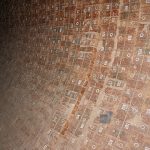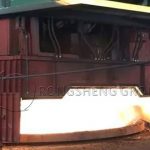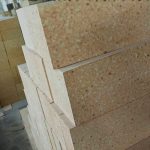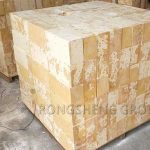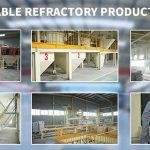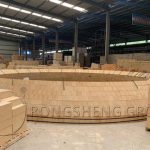The mullite polylight insulation bricks produced by Rongsheng Refractory Materials Factory use industrial Al₂O₃ powder, clay, well-sintered bauxite and kyanite as the main raw materials. A lightweight brick was prepared by adding sawdust (1mm screened) and polystyrene balls (diameter 0.2~0.5mm). Mullite insulation bricks have the characteristics of high high-temperature strength, low porosity, and corrosion resistance, and are widely used in high-temperature industrial kiln linings.
Mullite insulation bricks can be divided into lightweight mullite insulation bricks and corundum mullite insulation bricks (also called heavy mullite insulation bricks) according to their density. Mullite insulation bricks are divided into JM23, JM26, JM28, and JM30 according to their grades. Mullite insulation bricks are divided into 1350 mullite insulation bricks, 1450 mullite insulation bricks, 1550 mullite insulation bricks, etc. according to different use temperatures. Moreover, 1550 mullite bricks can be directly exposed to flames and have the characteristics of high-temperature resistance, small thermal conductivity, and significant energy-saving effects.
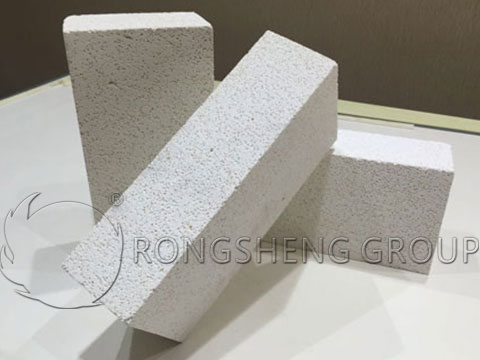
Advantages of Mullite Insulation Bricks for Ceramic Kilns
- Due to the low thermal conductivity of mullite insulation bricks, it has a good insulation effect and can make the furnace wall thinner.
- Mullite insulation bricks have the characteristics of low heat melting and low thermal conductivity, so the lightweight mullite brick series products accumulate very little heat energy, and the energy-saving effect is very obvious in intermittent operation kilns.
- Low impurity content, with very low content of oxides such as iron and alkali metals. Therefore, the refractoriness is high, and the high aluminum content enables it to maintain good performance under reducing atmosphere.
- The high-temperature compressive strength of mullite insulation bricks is high, which ensures the strength and stability of masonry.
- The appearance size of mullite insulation bricks is precise, which can speed up the masonry speed. It reduces the use of refractory mud, ensures the strength and stability of masonry, and thus prolongs the life of the lining.
- Mullite polylight bricks are easy to process and can be processed into special shapes according to customer needs, thereby reducing the number of bricks and masonry joints.
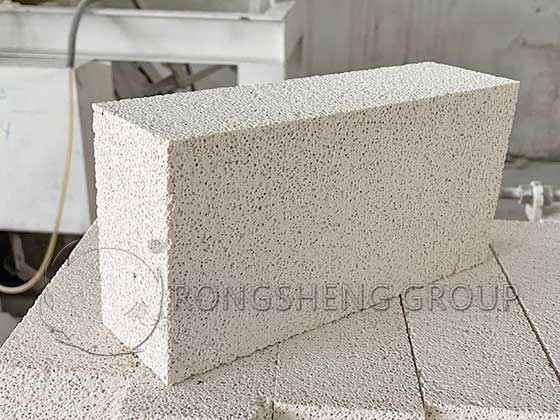
The Function of Mullite Insulation Brick
Mullite insulation brick can be used as the backing insulation layer of hot surface refractory lining or other refractory materials. It is used in ethylene cracking furnace, tubular heating furnace, synthetic ammonia conversion furnace, gas generator, high-temperature shuttle kiln, tunnel kiln, ceramic roller kiln, push plate kiln and other industrial furnace refractory furnace insulation materials in the petroleum and chemical industries.
Mullite insulation brick is suitable for the lining of cracking furnace, hot air furnace, ceramic roller kiln, electric porcelain drawer kiln, glass crucible and various electric furnaces. The series of products are made of natural high-quality high-aluminum and low-iron raw materials, and the structure is mainly high-quality insulating refractory bricks with mullite crystal phase. The products have the characteristics of high compressive strength, good thermal shock stability, low thermal conductivity, strong anti-penetration ability, and erosion resistance. It can be widely used in metallurgy, petrochemical, machinery, ceramics and other industries as lining or insulation layer of industrial furnaces. Mullite insulation brick is an ideal product for longevity, energy saving and efficiency improvement.
Advantages and functions of mullite insulation brick. Rongsheng refractory brick manufacturer, supply high-quality insulation brick material products. Including various mullite insulation bricks, high-strength lightweight insulation bricks, lightweight insulation boards, etc. Contact Rongsheng for a free quote now!
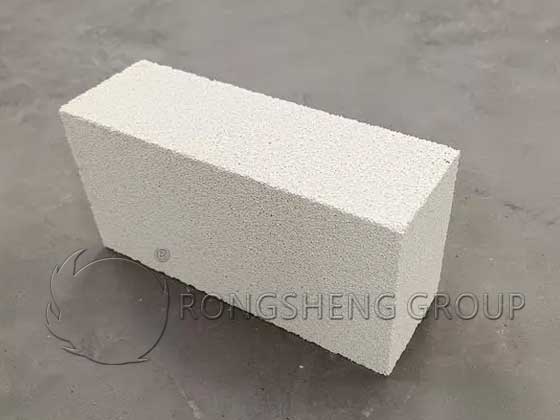
The Production Process and Method of Mullite Bricks
The current production method of mullite bricks is usually wet production. The main raw materials are kaolin, polystyrene plastic particles (such as foamed polystyrene particles), mullite clinker, sawdust, etc. The process flow is to add water to the raw materials and stir them, and then use a mud extruder to extrude a brick with a moisture content of about 36%. The brick is dried in the shade for 5-6 days to a moisture content of about 17%, then dried to a moisture content of about 3%, and finally fired. This method will have an irregular shrinkage of 6% in the overall volume after firing. Therefore, it is also necessary to cut the 6 faces of the brick body to reach the preset size. The disadvantages of this production method are as follows:
- First, the amount of water added is large, the production cycle is long, and the weather conditions are greatly affected when drying in the shade, resulting in low efficiency.
- Second, polystyrene plastic particles produce harmful volatiles during the firing process (similar to burning plastic).
- Third, the production cost is high. In order to obtain bricks of suitable size, the fired rough bricks need to be cut. About 1.6 tons of materials can often only produce about 1 ton of finished products, resulting in a certain degree of waste.
The main function of mullite lightweight insulation brick is to serve as heat insulation for kilns. The smaller its density, the lower its thermal conductivity and the better its insulation effect. And the smaller the density, the less mineral raw materials are needed for manufacturing, which saves refractory mineral resources better. The density of mullite lightweight insulation brick is mainly determined by the amount of high-temperature burn-out filler added. During molding, the more high-temperature burn-out filler, the lower the density after sintering. However, light weight, low density and strength are a pair of contradictions. The more high-temperature burn-out filler is added, the lower the body density of the resulting refractory product. Not only is the molding combination more difficult, but it is also difficult to obtain the strength that meets the use requirements, so the actual density is difficult to make very low. Objectively, reducing the density will lead to a reduction in other properties. For example, the reduction in strength, the decrease in the temperature of contact with open flames, the low service life, and the failure to meet the use requirements, and there is no commercial value.
In the production process of mullite bricks, the role played by expanded perlite is mainly three points.
- First, since the expanded perlite will melt during firing, the mullite brick will form holes during firing. It replaces the traditional polystyrene plastic particles to form holes, and no harmful gases are discharged during firing, meeting environmental protection requirements.
- Second, the density of expanded perlite is relatively small. Proper adjustment of the proportion of expanded perlite can play a role in adjusting the overall density.
- Third, the overall firing temperature is different according to the different proportions of expanded perlite added, which plays a role in adjusting the firing temperature.
Kyanite will be transformed into mullite after firing, and the volume of the two states before and after firing will expand by about 15%. This offsets the volume shrinkage of mullite clinker during sintering, so that the volume change of the product produced by this scheme before and after firing is within the required range, usually only about 0.5%.
Therefore, when producing lightweight mullite bricks, compared with traditional methods, it has the following advantages:
- First, no harmful gas is discharged during firing, which meets environmental protection requirements.
- Second, there is no need for traditional shade drying and drying processes, which greatly shortens the production cycle.
- Third, after firing, the finished product size is stable, and there is no need to cut the fired bricks, saving production costs.
- Fourth, since there is no need for traditional shade drying and drying processes, the floor space required for production is reduced. According to calculations, a certain amount of mullite brick production capacity can be increased within the same production area.



